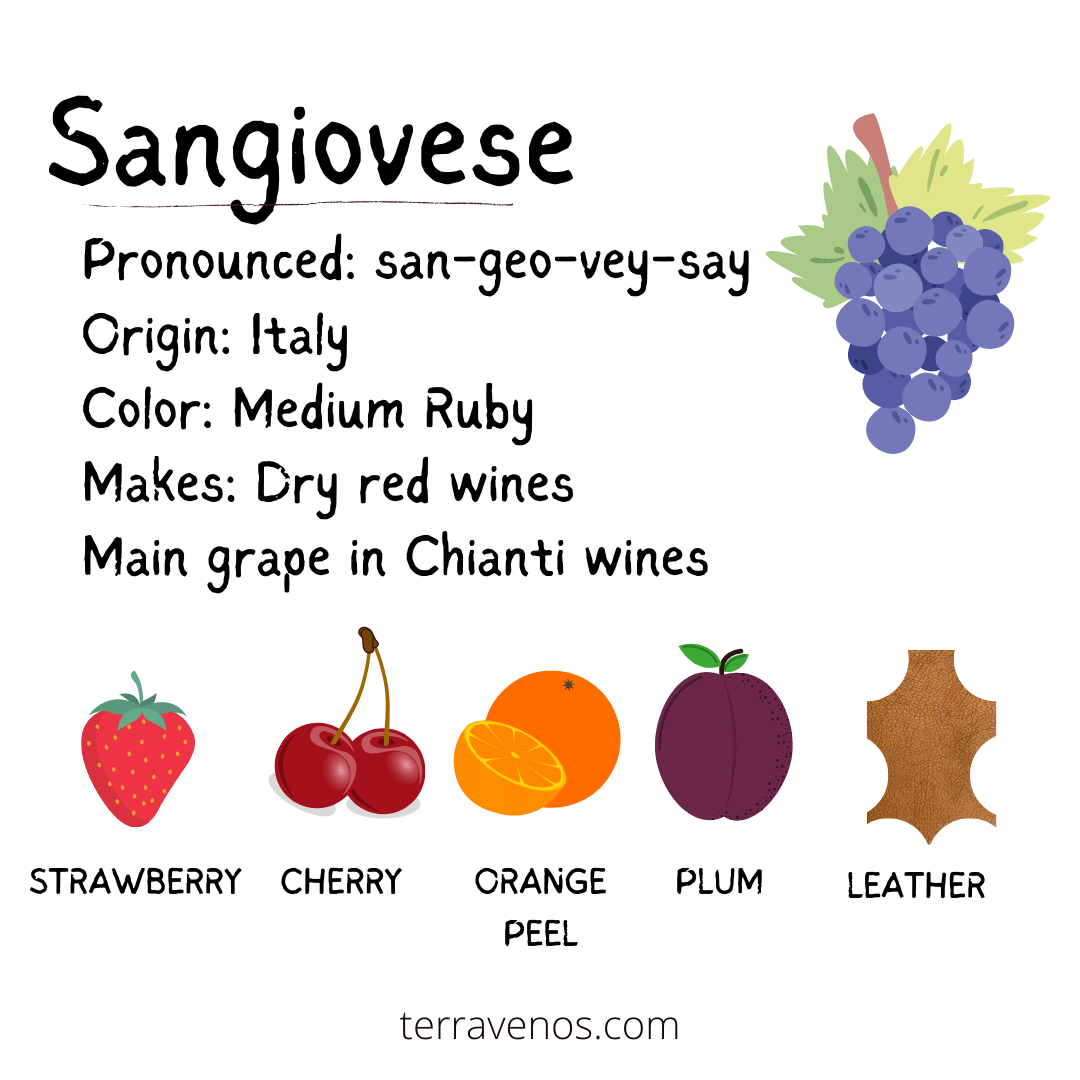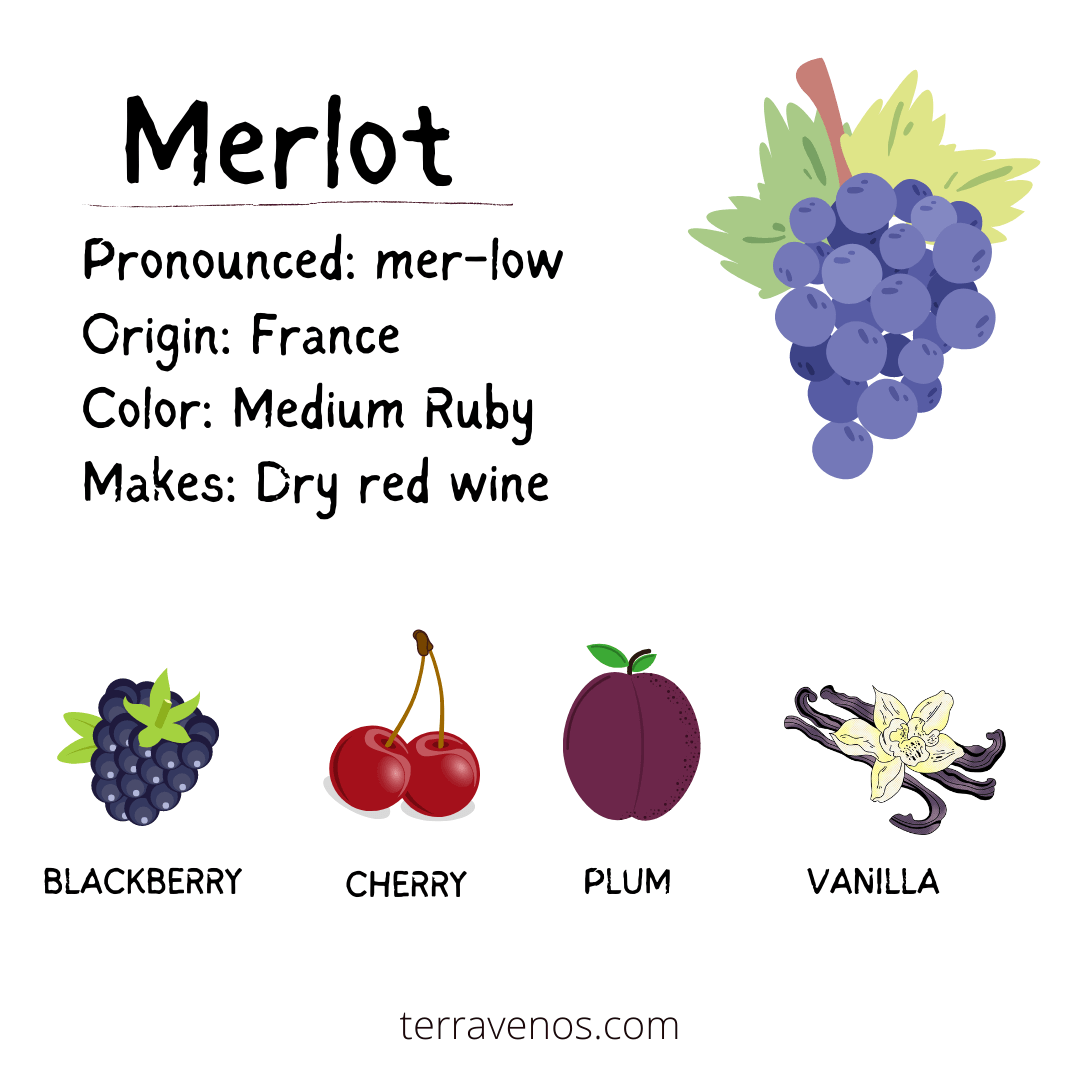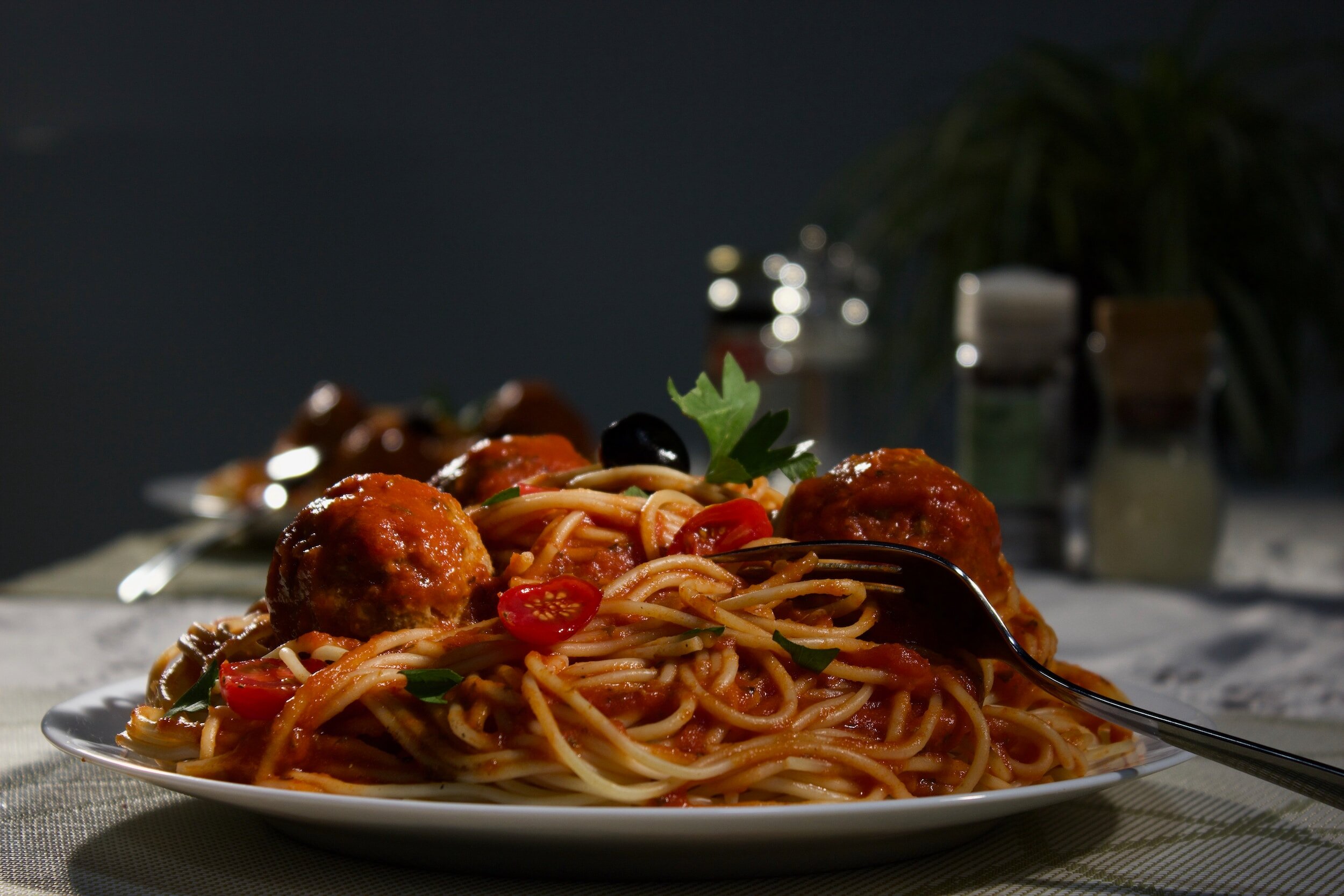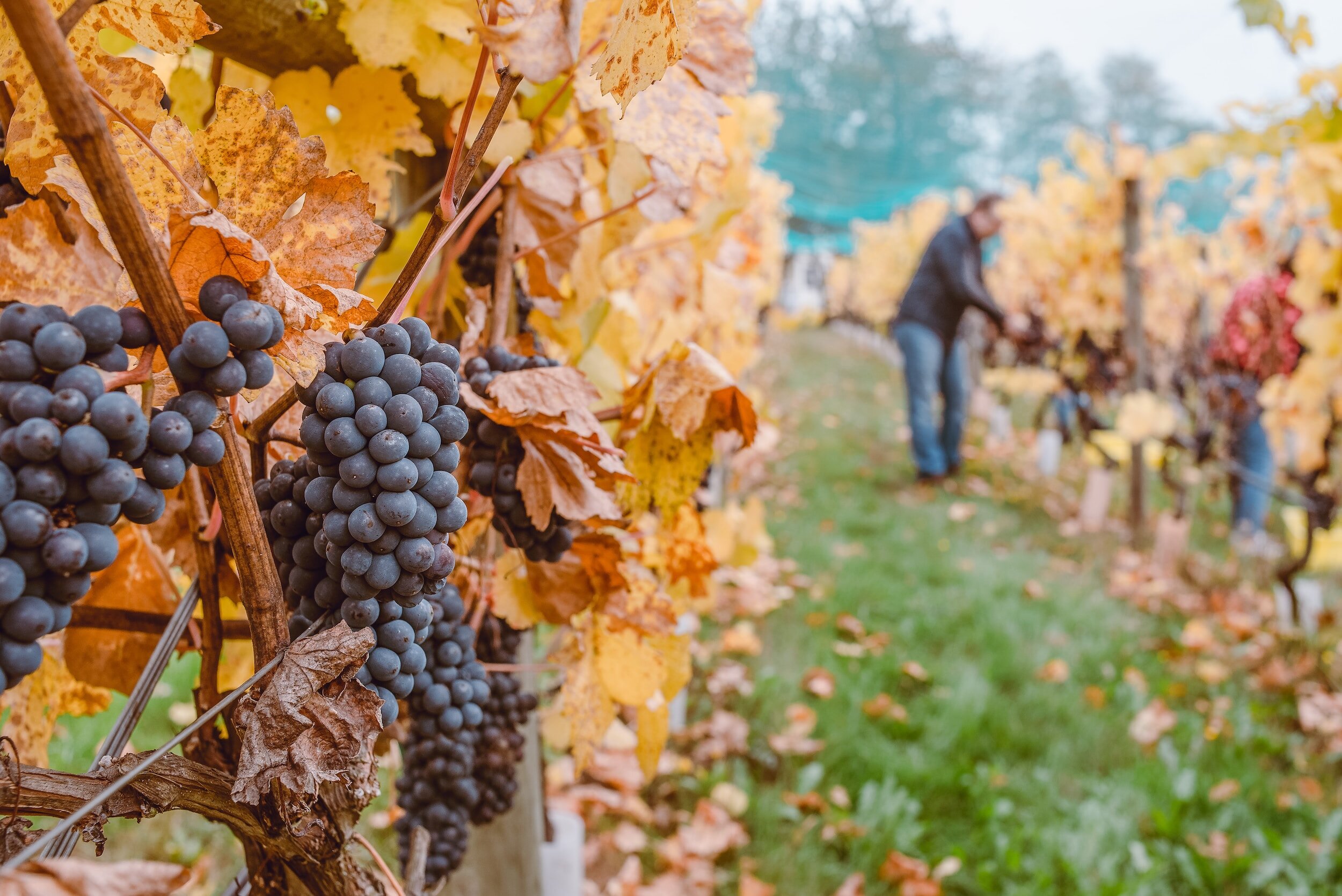
What’s the difference between Sangiovese and Merlot?
Italy’s Sangiovese boasts a medium body, biting acidity, high tannins, and crunchy cherry and herbal notes. Merlot tends to have a smoother, rounder body, softer, velvety tannins, and showcases warm plum notes. Both wines are commonly found in the price range of $10 to $20 USD.
Here’s what you need to know about the differences between Sangiovese and Merlot.
Sangiovese Basics: Italy’s Grape

Sangiovese, an ancient Italian grape, plays a significant role in the country’s wine culture. This food-friendly red wine has a medium to full body with red fruit notes, such as cherries and raspberries, complemented by subtle herbal. Italy remains the primary producer of Sangiovese globally, offering a diverse range of options to cater to various tastes and budgets, from everyday drinking wines to premium selections. You’ll also find excellent Sangiovese expressions from regions like California.
Here’s a full post on Sangiovese.
Fun Wine Fact: Sangiovese is a primary grape variety in the world-renowned Chianti wine. Check out this post on how to buy Chianti wines, along with a print-out shopping guide.
Merlot Basics: A Versatile Favorite

Originally from the Bordeaux region of France, Merlot’s considered one of the major international wine grape varieties. Merlot wines are smooth, seductive, and velvety. They have a medium body, medium tannins, and plum notes. Often, Merlot wines see oak will have vanilla and spice notes, too. Check out this full post on Merlot wine.
Today, Merlot can be found not only in Bordeaux but also in regions like California, Chile, and Australia, each offering its unique expression of this beloved grape variety.
Fun Wine Fact: Merlot is a key grape used in the production of some famous Bordeaux blends. Here’s what makes a wine a Bordeaux.
Wine Comparison: Sangiovese vs. Merlot
Let’s uncork a side-by-side comparison of Sangiovese and Merlot.
Sangiovese Wine Profile:
- Sweetness: Sangiovese is typically produced in a dry style, offering minimal residual sugar.
- Alcohol: Sangiovese wines generally have a moderate alcohol content, ranging from around 13% to 14.5% ABV.
- Body: Sangiovese has a medium body. You may come across fuller-bodied expressions in premium Sangiovese wines.
- Acid: Sangiovese has medium plus acidity. This higher acid level makes the red fruit taste bright and fresh.
- Tannin: Medium and textured. In cooler years, if the grapes don’t fully ripen, this can add herbal notes to your Sangiovese wine.
- Flavor and Aroma Intensity: Sangiovese boasts vibrant aroma intensity, with red cherries, raspberries, and hints of herbs and earthiness.
- Flavors: The flavor profile often includes notes of red berries, subtle spice, and herbal undertones and sometimes an orange peel.
Merlot Wine Profile:
- Sweetness: Merlot is almost always dry, but can come in off-dry styles.
- Alcohol: Merlot wines typically have a moderate alcohol content, similar to Sangiovese, ranging from around 12.5% to 14% ABV.
- Body: Merlot is known for its medium body.
- Acid: Merlot has medium acid, usually lower than Sangiovese. This will give it a rounder mouthfeel.
- Tannin: Merlot has medium to medium (-) tannins that are supple and smooth. Velvety is often the word used to describe them.
- Flavor and Aroma Intensity: Merlot displays medium aroma intensity with black plum, and red berry aromas, such as cherries, with occasional notes of spice.
- Flavors: The flavor profile often includes red fruit notes, such as cherry and raspberry, complemented by delicate spice undertones.
Are Sangiovese and Merlot Similar?
Sangiovese and Merlot are both structured red wines, meaning that you’ll notice their tannins, acid, and alcohol level. This makes them perfect food wines. They can also share red fruit notes, like raspberry and red cherry.
What Is the Difference Between Sangiovese and Merlot?
Sangiovese tends to have higher acid and chalkier tannins than Merlot. You’ll notice bright red fruit in Sangiovese wines and supple, silky dark fruit in Merlot wines.
Sangiovese vs. Merlot Winemaking
Winemakers use various techniques when crafting Sangiovese and Merlot. This includes using neutral vessels, such as stainless steel or barrels, for fermentation and/or aging. Both wines can be made as single varietals (i.e., only Sangiovese grapes or only Merlot grapes go into the wine), and used in blends, like Chianti and Bordeaux blends.
Both wines undergo traditional red winemaking processes.
Sangiovese vs. Merlot: Food Pairings and Serving Temperature

Sangiovese’s medium body and higher acidity make it a perfect match for classic Italian dishes, including pasta with tomato-based sauces, grilled meats, and aged cheeses. Merlot’s richer, softer profile pairs beautifully with dishes like roasted chicken, meatloaf, and mushroom-based dishes.
Check out more:
Wines Similar to Merlot
My Favorite Merlot Food Pairings
Easy, Everday Dishes to Pair with Sangiovese
Vegetarian Pairings for Merlot Wine
Serving Sangiovese and Merlot Comparison
| Aspect | Sangiovese | Merlot |
|---|---|---|
| Serving Temp | 60-65°F | 55-60°F |
| Decanting Recommendations | Not necessary, but improves with aeration | 30 minutes to 1 hour to enhance flavors |
| Glass Shape | Tulip-shaped | Bordeaux glass |
Both Sangiovese and Merlot are best served slightly chilled. Place them in the refrigerator for approximately 15-20 minutes before serving to reach the ideal temperature. You should be able to enjoy most Sangiovese wines immediately after opening (decant fuller styles and aged bottles), while Merlot benefits from some aeration before tasting.
Helpful Wine Drinking Tip: Inexpensive, entry-level wines rarely benefit from decanting. Give them a good swirl in your glass to open them up and then sip away!
Which Is More Expensive, Sangiovese vs. Merlot?
The price you pay for a bottle of wine will depend on various factors. In general, Sangiovese and Merlot wines are similarly priced. You should be able to find decent bottles of both wines within any wine budget.
| Wine Price | Sangiovese | Merlot |
|---|---|---|
| Entry-level | Under $10 USD | Under $10 USD |
| Everyday | $10-$15 USD | $10-$15 USD |
| Premium | $15-$25 USD | $15-$20 USD |
| Super-Premium | $30-$50 USD | $20-$30 USD |
Merlot and Sangiovese wines from renowned vineyards can also be expensive, with prices often exceeding $50 per bottle.
Here’s a full post on how much you should pay for Merlot wines.
Which Is Better, Sangiovese or Merlot?
If you enjoy red wines with a medium body, vibrant acidity, and chewy tannins, then Sangiovese is for you. If you prefer red wines with softer tannins and layers of red berry and plummy flavors, then Merlot would be your ideal choice.
Final Thoughts – Sangiovese or Merlot?

Sangiovese offers brighter red fruit compared to Merlot’s more velvety plummy side, but both deserve a place on your table.
I recommend organizing a side-by-side tasting of these two wines if you haven’t done so already.
Grab two bottles of similarly priced Sangiovese and Merlot and enjoy an evening of exploration with friends. Remember, the world of wine is vast, and each bottle will be different, making this experiment worth repeating.
Discover More:
Merlot vs Pinot Noir
Merlot vs Chardonnay
Merlot vs Cabernet Sauvignon
Merlot vs Malbec
Sangiovese vs Cabernet Sauvignon
Sangiovese vs Merlot
Sangiovese vs Pinot Noir
Sangiovese vs Zinfandel
Sanviovese vs Chianti
Sangiovese vs Syrah
Merlot vs Pinot Grigio
Merlot vs Grenache
Thirsty for More?
If you’re passionate about boosting your wine knowledge, why not host a blind tasting?
Check out: Chenin Blanc vs. Sauvignon Blanc and Cabernet Sauvignon vs Cabernet Franc.
Delicious wines can be found at every price point; here’s how to find great wines under $50.



